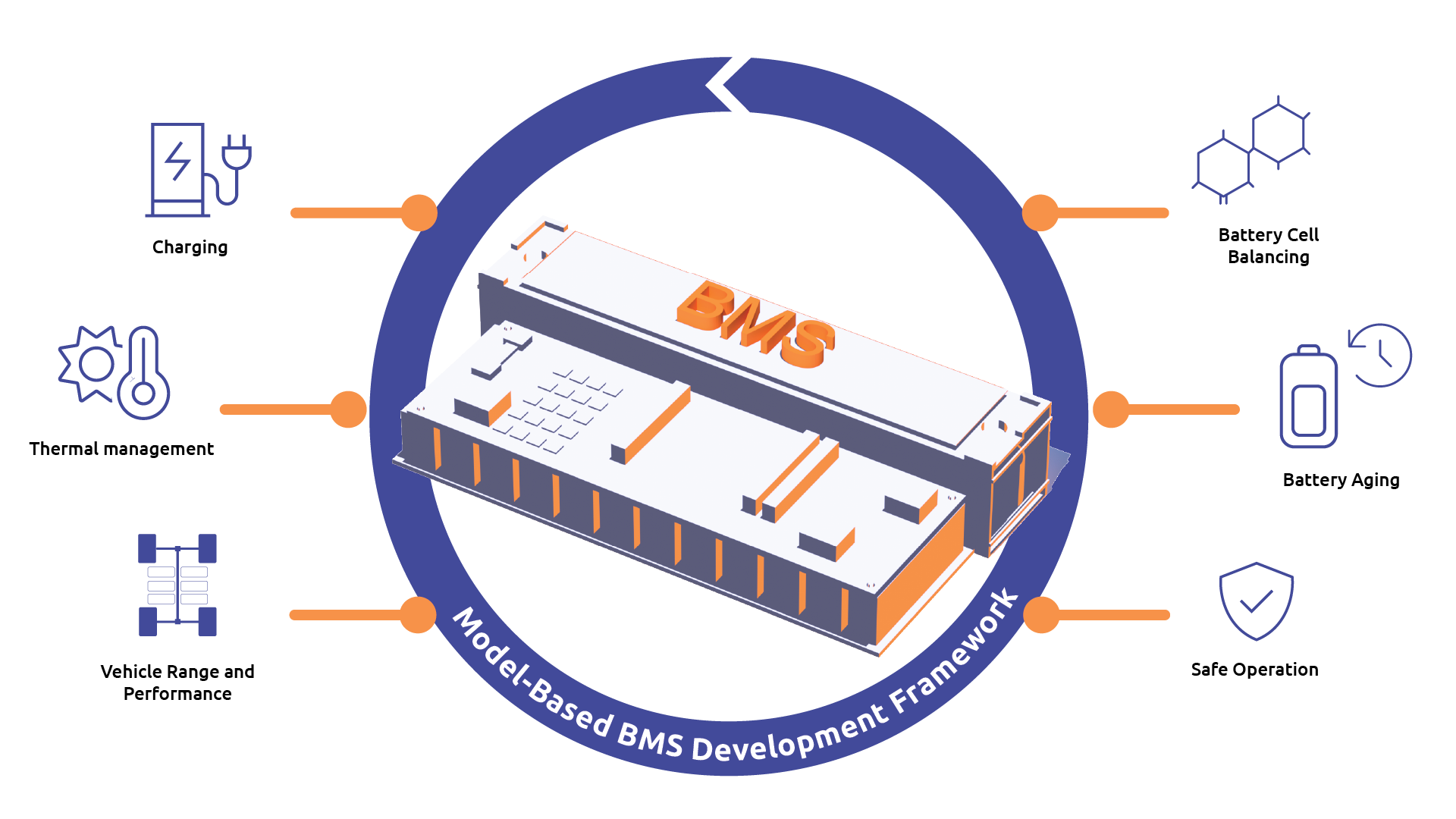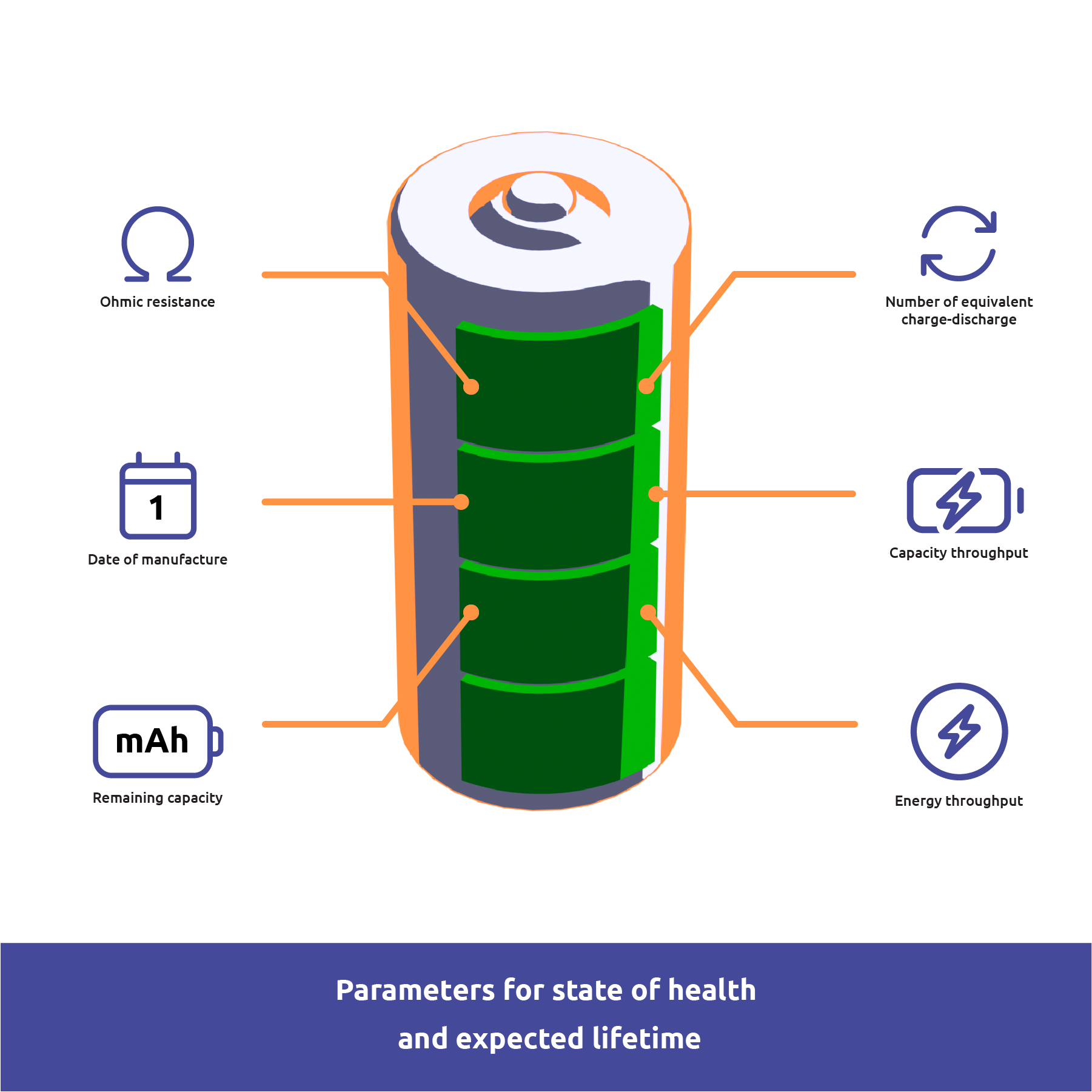State of health and expected lifetime of batteries
New Regulation EU 2023/1542 deals with whole life cycle of a battery including conformity assessment procedures, sustainability, performance, safety, collection, recycling and second life of batteries as well as information about batteries for end-users and economic operators.

Among all information intended for the end-user it can be found the state of health of batteries and their expected lifetime that apply to:
- electric vehicle batteries
- stationary battery energy storage systems
- LMT batteries
Why does a battery discharge faster?
As years pass, and as the batteries charge and discharge, their storage capacity begins to slowly reduce. This is a normal process that is influenced by factors such as temperature, number of cycles, and depth of discharge. Most of us have had the experience of noticing that over time our phone battery can’t hold a charge for as long. This phenomenon is due to the state of health of the battery that is gradually deteriorating.
The State of Health (SoH) means a measure of the general condition of a rechargeable battery and its ability to deliver the specified performance compared with its initial condition. The unit of SoH is a percentage (100% = the battery’s conditions match the battery’s specifications).
Typically, a battery’s SoH will be 100% at the time of manufacture and will decrease over time and use.
Where are the information regarding the state of health of batteries?
The regulation EU 2023/1542 sets up that the end-user shall determine the state of health and expected lifetime of the batteries at any time from the data stored in the battery management system.
The battery management system means an electronic device that controls or manages the electric and thermal functions of a battery in order to ensure the battery’s safety, performance and service life. This system communicates with the vehicle, light means of transport or appliance in which the battery is incorporated.

The lifetime of a battery means the period that starts when the battery is manufactured and ends when the battery becomes waste.
The battery management system is defined by technical parameters associated with certain types of batteries.
Technical parameters of the battery management system
The parameters are classified in accordance with the state of health and lifetime.
Parameters for determining the state of health
- for electric vehicle batteries:
- state of certified energy (SOCE).
- for stationary battery energy storage systems and LMT batteries:
- the remaining capacity;
- where possible, the remaining power capability;
- where possible, the remaining round trip efficiency;
- the evolution of self-discharging rates;
- the evolution of self-discharging rates;
Parameters for determining the expected lifetime
- for stationary battery energy storage systems and LMT batteries:
- the date of manufacture of the battery and, where appropriate, the date of putting into service;
- the energy throughput;
- the capacity throughput;
- the tracking of harmful events, such as the number of deep discharge events, time spent in extreme temperatures, time spent charging in extreme temperatures;
- the number of full equivalent charge-discharge cycles.

Who does have access to the battery information?
From 18 August 2024 , the person who has legally purchased the battery, including independent operators or waste management operators, has read-only access to the data for the parameters for the purpose of:
- making the battery available to independent aggregators or market participants through energy storage;
- evaluating the residual value or remaining lifetime of the battery and capability for further use, based on the estimation of the state of health of the battery;
- facilitating the preparation for re-use, preparation for repurposing, repurposing or remanufacturing of the battery.
Manufacturers shall provide access to the data for the parameters of the battery management system.